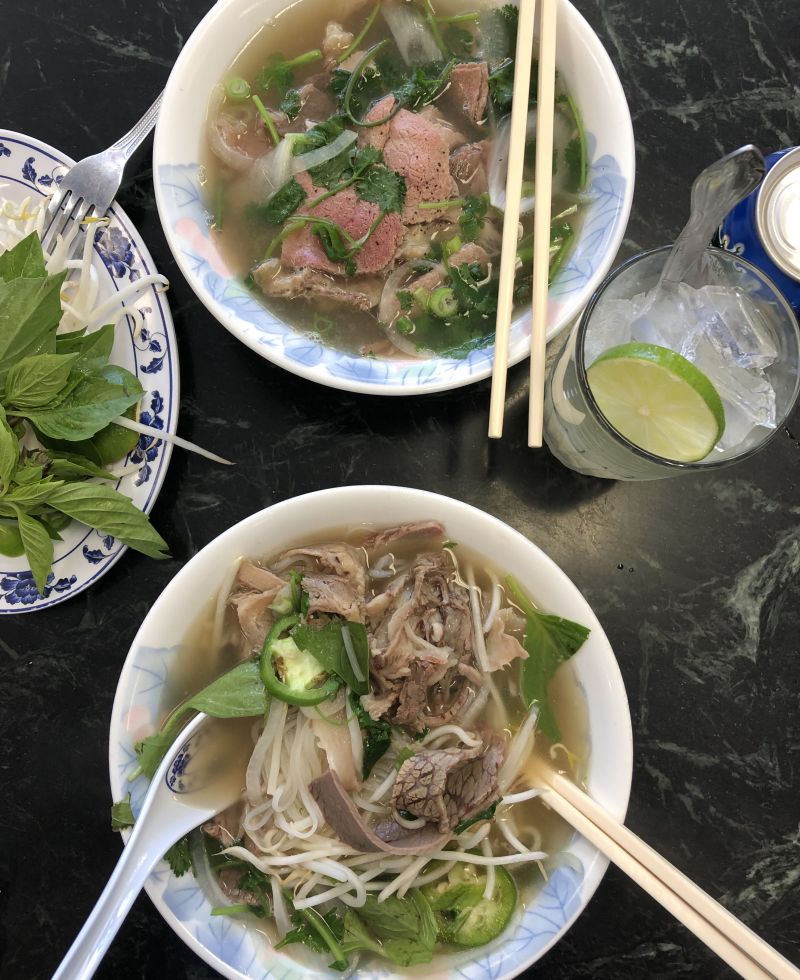
It’s highly likely that you first befriended pho at a restaurant or pho joint, where the menu items may have seemed overwhelming. Welcome to the ultimate Viet have-it-your-way food experience, which has its pros and cons.
An extensive pho menu allows people to dial in their personal preferences but it can also confuse. At first glance, things may all look the same since menu items usually all start with phở, such as phở chin, phở chín bò viên, phở tái nạm. And, the wait person typically asks for your order soon after you sit down. What to do to order efficiently?
Pho ordering strategies
I cook a lot of pho at home but I still go out for it. My approach to ordering goes like this: Scan the menu, focusing on the word(s) that come after phở, which describe the topping. Then order by topping. For example, request phở chín bò viên (pho with cooked beef and meatballs) by nonchalantly saying, “Chín bò viên.” Or, point to the menu item and order by its number.
Use this primer to navigate a pho menu and master key terms. What I have here isn't exhaustive but the collection of terms will get you far in the pho world!
Pronunciation guides aren’t perfect and mine below are done to help you deal with the many accent marks involved in Vietnamese language.

To polish your pho prowess to a shine, listen to my dad on this audio recording as you practice. He pronounces the terms in bold below in their order of are included in his pronunciation guide. He uses northern Vietnamese pronunciation because that is where he was born, as was pho!
Start surprising Viet people at pho restaurants! If you make pho at home too, weave some of these terms into your pho speak for a Viet-glish experience.
Pho Basic Pronunciations
Impress your friends and favorite pho shops by saying these simple pho terms like a pro:
- pho = phở (“fuhh?”)
- pho rice noodles = bánh phở (“bahn? fuhh?”)
- beef pho = phở bò (“fuhh? bah”)
- chicken pho = phở gà (“fuhh? gah”)
- vegetarian pho = phở chay (“fuhh? chai”)
With chicken and vegetarian pho, toppings are easy to figure out. For example, you may get to choose bone-in or boneless chicken, thigh or breast, with or without offal. Vegetarian pho is often set in its toppings. Since most people order beef pho, the following is my streamlined, down and dirty interpretation and notes of a pho menu. As a bonus, I included pho condiments and garnishes!
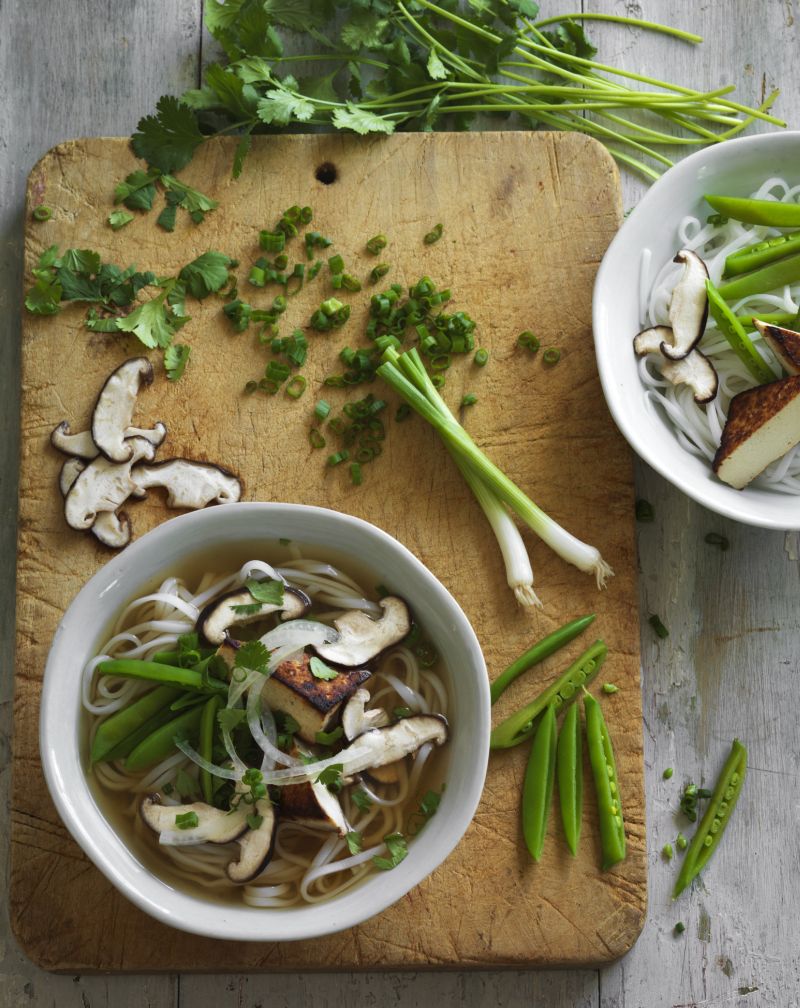
Foundational Beef Pho Favorites
Foundational pho are ones that appeal to purists, kids, and those who value simplicity. They’re fabulously doable for home cooks. They’re considered old school, cozy and homey, what you’d get a small pho shops in Vietnam. They are classics in many ways and easy to love:
Cooked beef = chín (“chinn?”)
What: Slices of chewy-tender beef (lean brisket or other tough cuts) that simmered in the broth
Why: The meat is flavorful and is one with the broth
Rare steak = tái (“tie?”)
What: Thinly sliced beefsteak cooked by the hot broth, though it’s usually very lean, mild-tasting eye of round
Why: You like rare-ish beef
Meatball = bò viên (“bah vee’en”)
What: Springy meatballs (tendon bits may be in it) that are usually halved or quartered for easy retrieval
Why: It’s fun for kids of all ages, friendly, not weird
Go Big and Wild with a Luxe Bowl
When you can’t decide or you want an extra thrilling beef pho experience, order:
Special bowl = đặc biệt (“dack bee-yet”)
What: A circus of textures, everything available that day
Why: To try various cuts or you can’t decide on topping
Train bowl = xe lửa (“se’uh luh’ah?”)
What: A very big đặc biệt special combo bowl that borrows on a term from Saigon-based pho shops from long ago
Why: For an epic experience
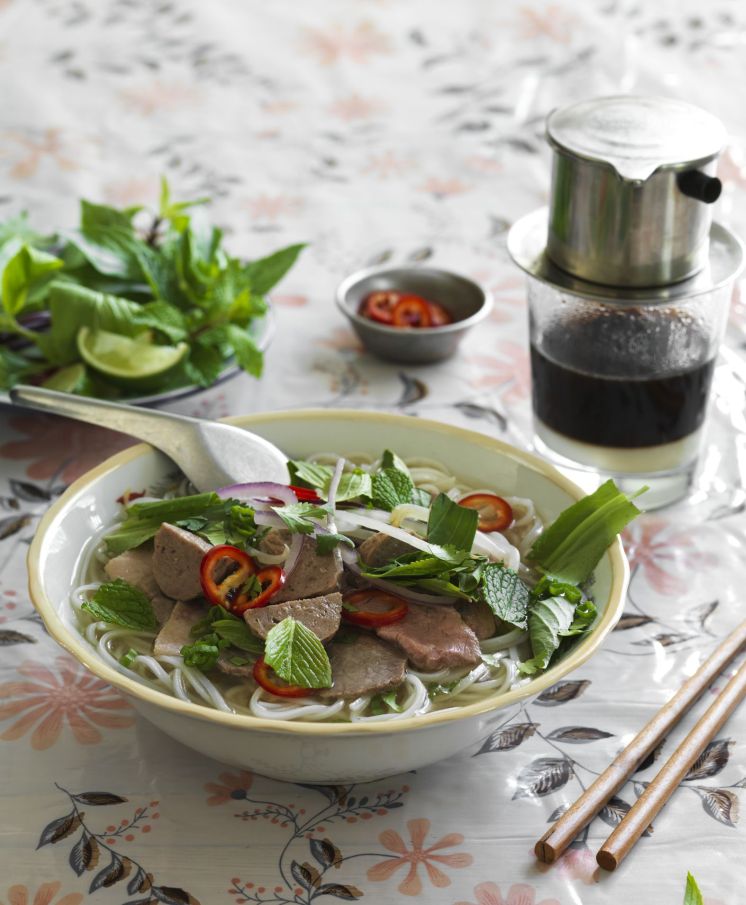
Adventurous Beef Pho with Textures
If you're extra particular about your beef pho experience, order the toppings a la carte. Typical options include:
Fatty brisket = gầu (“gow”)
What: Rich sliced brisket with a generous layer of fat though it can sometime be the same meat as chín
Why: Good pho flavor requires fat
Tendon = gân (“gun”)
What: Gelatinous, opaque pieces of tendon, cut from a gelled block or broth bones.
Why: For soft, rich contrasts
Flank = nạm (“nahm!”)
What: Chewy, ripply rough flank, may look loosey goosey, is not the same as flank steak
Why: A balance of chewiness and beefiness
Tripe = sách (“sahk?”)
What: Fringelike white book tripe should be thinly sliced for easy chewing
Why: Adds slight crunch and sometimes, a gamey taste
Crunchy flank = vè dòn (“veh zawn”)
What: Frilly strips of fat and lean with an unusually pleasant, slight crunch
Why: It’s somewhat hard to find and fun to eat
Pho Bowl Size Matters
A pho shops, there’s usually two or three size options for the bowls that you choose. Be ready since the wait staff can seem impatient.
Small bowl = tô nhỏ (“toe n’yaw?”)
What: When you’re looking for a snack, go small. It’s akin to what you’d get in Vietnam.
Medium bowl = tô vừa (“toe vuh’ah”)
What: A satisfying serving of pho that will keep you happy till your next meal.
Large bowl = tô lớn (“toe luhn?”)
What: For super hungry, big appetites. You could share it with a child, though a restaurant may have child portions on the menu.
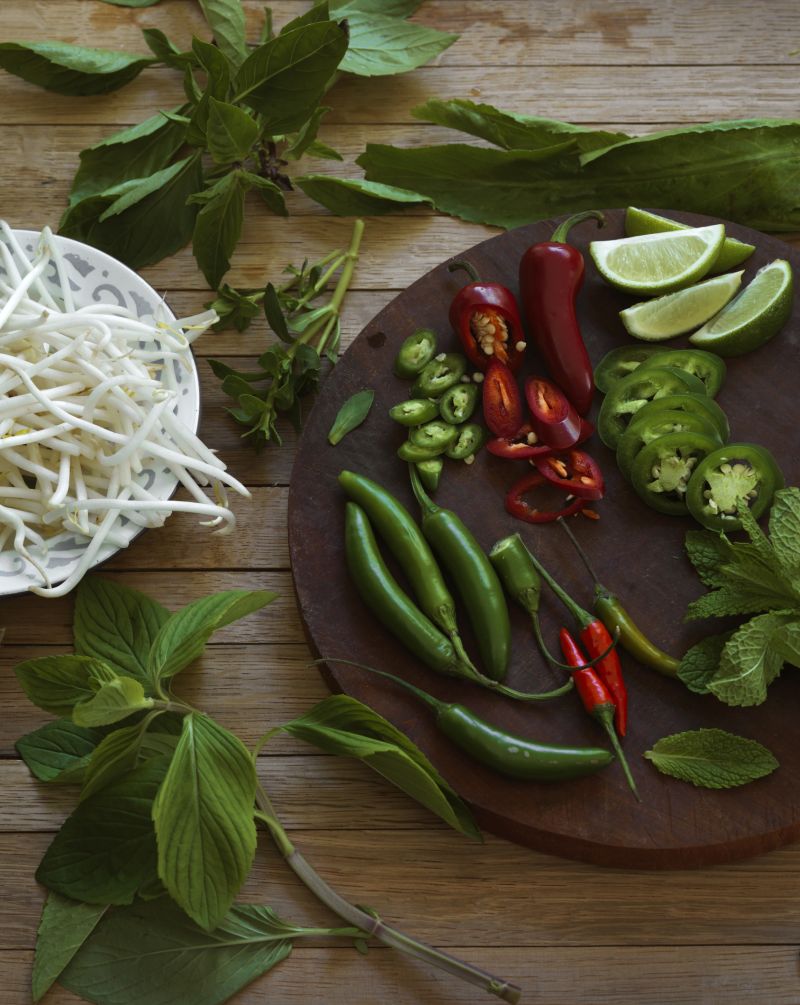
Common pho condiments and garnishes
As a bonus for advance pho lovers, master these words for these ingredients usually associated with the pho experience:
- Fish sauce = nước mắm (“nook mahm?”)
- Hoisin for pho = tương ăn phở (“toong ahng fuhh?”)
- Chile sauce = tương ớt (“toong uht?”)
- Garnish plate = đĩa rau sống (“de-ah rao soong?”)
- Chile = ớt (“uht?”)
- Bean sprout = giá (“zah?”)
- Lime = chanh (“chahn”)
- Mint = húng (“hoong?”)
- Spicy mint = húng cay (“hoong? kay”)
- Thai basil = húng quế (“hoong? quay?”)
- Culantro = ngò gai (“n’gaw guy”)
- Rice paddy herb = ngò om (“n’gaw ohm”)
P.S. A few final pho notes:
The banh pho rice noodles served at most pho joints for noodle soup are akin to the narrow ones sold in vacuum-sealed packages at Asian markets. Think linguine size. If freshly-made noodles are available (they’re usually fettucine size), get them! Large pappardelle size banh pho noodles are for stir-fried and pan-fried pho dishes (think chow fun size).
And, pho is in English-language dictionaries so no diacritics (accent marks) are needed when you’re writing about pho in English!













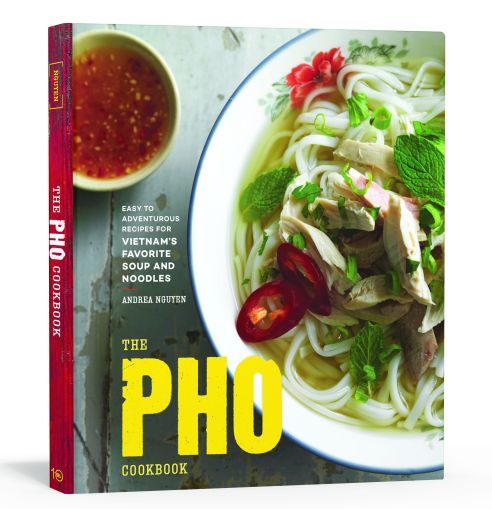




Heidi says
Loved this! I've been looking for good pho in the Bay Area for 3 years. I'd like to hear your picks for the best pho restaurants.
Andrea Nguyen says
I make a lot of pho at home. When I go out for it, I go to spots like Pho Y in south San Jose.
https://www.yelp.com/biz/pho-y-1-san-jose
cicely says
this is brilliant, thank you!
please, what does it mean to have questions marks (?) after the pronunciation?
Andrea Nguyen says
It's simply a way to guide you in understanding the pronunciation of the diacritics. Listen to my dad's audio while looking at the terms and you'll understand.
Ed Drozdowski says
We are traveling to Vietnam in September - this guide is invaluable ! Thanks